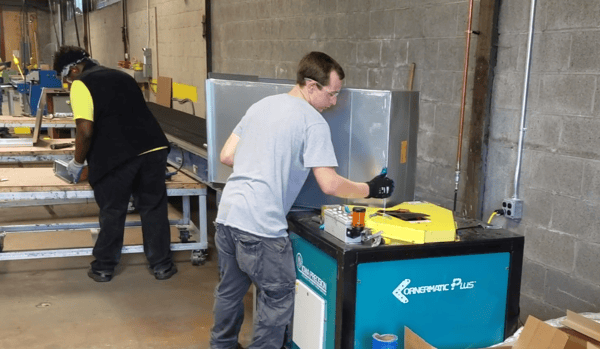In today's highly competitive manufacturing landscape, the HVAC industry is no exception when it comes to the pursuit of efficiency, quality, and cost-effectiveness. For HVAC sheet metal forming and fabricators, embracing lean manufacturing practices is a vital step towards achieving operational excellence. Lean principles empower companies to optimize their processes, eliminate waste, enhance productivity, and deliver exceptional value to customers. In this blog post, we will explore the importance of implementing lean manufacturing practices specifically tailored to HVAC sheet metal forming and fabricators.
What is Lean Manufacturing?
Lean manufacturing is a systematic approach to eliminating waste and enhancing value in production processes. Originally developed by Toyota, it focuses on creating more value for customers with fewer resources. Key principles of lean manufacturing include:
- Identifying Value: Understanding what customers truly value in a product or service.
- Value Stream Mapping: Analyzing the entire value chain, from raw materials to the final product, to identify inefficiencies and areas of improvement.
- Flow: Ensuring a smooth and uninterrupted flow of materials, information, and processes.
- Pull: Producing only what is needed, based on actual customer demand.
- Continuous Improvement: Striving for ongoing enhancements in all aspects of production.
Lean Manufacturing and HVAC Sheet Metal Forming: A Perfect Match
The HVAC sheet metal forming and fabrication industry can significantly benefit from implementing the following lean manufacturing practices:
- Minimized Waste: Lean practices aim to reduce all forms of waste, such as overproduction, excessive inventory, defects, waiting time, and unnecessary motion. This streamlined approach translates into cost savings and improved resource utilization.
- Optimized Production: By understanding customer needs and demands, HVAC sheet metal fabricators can ensure they produce the right quantities at the right time. This helps avoid overproduction and underproduction, maintaining an ideal inventory level.
- Improved Quality: Lean principles emphasize standardization and consistency. As a result, the chances of errors and defects are minimized, leading to a higher quality end-product.
- Enhanced Flexibility: Lean manufacturing encourages agile practices, allowing HVAC fabricators to respond swiftly to changing market demands, without compromising on quality or timelines.
![]()
The Role of Lean Manufacturing in Customer Satisfaction
Lean manufacturing practices contribute to higher customer satisfaction levels in several ways.
- Faster Turnaround Times: By minimizing waste and optimizing production, HVAC fabricators can reduce lead times, delivering products to customers faster.
- Consistent Quality: Lean principles focus on standardization and error reduction, ensuring that customers receive products that meet or exceed their expectations.
- Greater Customization: Contrary to common misconceptions, lean manufacturing can improve customization capabilities. By eliminating bottlenecks and streamlining processes, fabricators can adapt to unique customer requirements more efficiently.
Employee Engagement and Lean Culture
\Implementing lean practices requires a cultural shift within an organization. Employees at all levels must be actively involved and empowered to contribute to continuous improvement. This fosters a sense of ownership and responsibility, leading to a more engaged and motivated workforce.
The HVAC sheet metal forming and fabrication industry can benefit immensely from embracing lean manufacturing principles. By minimizing waste, optimizing production, and prioritizing customer satisfaction, fabricators can gain a competitive edge in a challenging market. The commitment to a lean culture not only enhances the bottom line, but also fosters an environment of innovation and collaboration, positioning businesses for long-term success in the dynamic HVAC industry.


